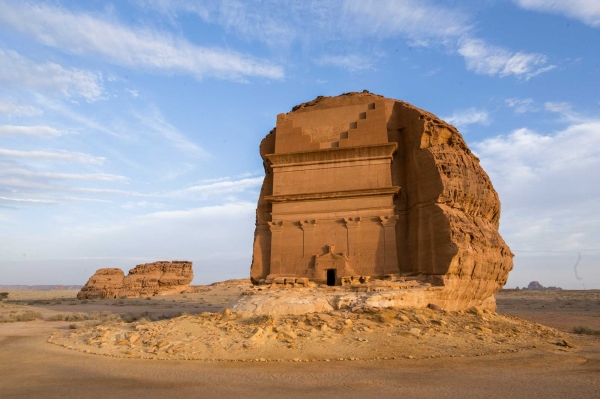
Qasr al-Farid is a historical palace and cemetery in al-Ula Governorate, west of the Kingdom, and the largest Nabataean mausoleum in the region, dating back to the era of the Nabatean civilization in the Arabian Peninsula, between the first century BC and the first century AD and is part of the historical al-Hijr area. The largest preserved site of the Nabatean civilization, the first Saudi site registered in the UNESCO World Heritage List in 2008, and one of the 111 historical cemeteries in al-Hijr.
Construction of Qasr al-Farid
Qasr al-Farid was a rocky mass that was carved about two thousand years ago to be a unique palace that houses the tomb of a person named: Hayyan bin Koza, who was a citizen of the Kingdom of Lihyan.
Qasr al-Farid is the best example of Nabataean architecture in the region and annually attracts about 400,000 visitors. Also, it was placed among the archaeological sites of great importance in Saudi Arabia, as its visits are limited to exploration from the outside, and visitors are not allowed to enter.
Name of Qasr al-Farid
It was named al-Farid for its separate and remote location from the cemetery area in al-Hijr, and to be distinguished from other Nabataean tombs, as it contains two additional rock columns in its facade, different from the other historical tombs in al-Hijr.
Qasr al-Farid façade
The palace has a huge architectural façade, the largest in stones, with a height of 72 feet; Lihyan, Thamudic, and Nabataean inscriptions and motifs adorn its upper parts, while a third of the lower façade of the palace is limited to rough chisel marks.
Qasr Al-Farid overlooks international events, as the 2020 Dakar World Rally and the Al-Ula-Neom Rally passed near it, and the activities of Winter at Tantora are held near it, which hosts international personalities in the fields of art, history, and culture.
Related quizzes
Related articles

